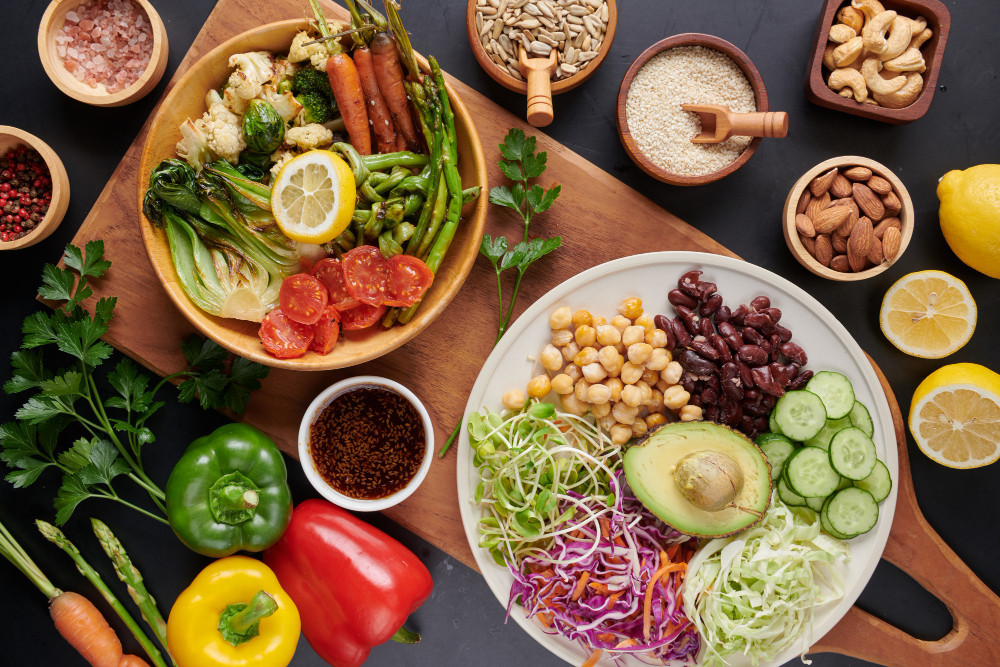Program menurunkan berat badan umumnya dilakukan dengan membatasi porsi makanan harian. Saat ini hadir metode diet dengan volume eating, yaitu makan makanan rendah kalori dalam porsi banyak untuk menurunkan berat badan. Efektifkah menurunkan berat badan dengan volume eating dan apa dampaknya dalam jangka panjang? Simak ulasannya berikut ini.
Apa Itu Volume Eating?
Ada banyak cara menurunkan berat badan yang bisa Anda coba. Belakangan ini ada metode menurunkan berat badan dengan volume eating, yaitu pola makan yang fokus pada makan makanan rendah kalori namun dalam jumlah lebih banyak.
Metode ini mendorong seseorang untuk makan makanan rendah kalori seperti buah, salad sayur, dan sup dalam jumlah banyak untuk membantu memberi rasa kenyang. Orang yang menjalani diet ini biasanya akan makan makanan rendah kalori dalam porsi besar, membatasi makanan berkalori sedang, dan benar-benar menghindari makanan tinggi kalori.
Dengan pola makan ini, Anda akan lebih mudah mempertahankan berat badan atau menurunkan berat badan namun tetap merasa kenyang dan terpenuhi kebutuhan nutrisinya.
Baca Juga: Cara Diet Sehat Tetapi Tetap Bisa Makan Enak
Cara Melakukan Volume Eating
Konsep dari volume eating adalah membatasi kalori dengan cara makan makanan rendah kalori dalam porsi banyak. Cara ini akan mendorong Anda untuk menambahkan lebih banyak buah, sayuran, dan makanan padat nutrisi lainnya sehingga Anda bisa mendapatkan sensasi fisik makan lebih banyak tanpa benar-benar mengonsumsi lebih banyak kalori.
Ketika Anda makan lebih banyak, Anda akan merasa lebih kenyang. Terlebih jika makanan yang Anda konsumsi merupakan makanan yang berserat dan nutrisi tinggi. Ketika Anda kenyang lebih lama, Anda mungkin akan makan lebih jarang sepanjang hari dan lebih selektif dalam memilih makanan.
Dalam volume eating, pengaturan makanan didasarkan pada jumlah kalori setiap makanan. Makanan yang mengandung kepadatan kalori rendah bisa Anda konsumsi kapan saja dan dalam jumlah berapa pun dalam volume eating. Sebaliknya, makanan dengan kalori tinggi sebaiknya dikonsumsi dalam jumlah sedikit atau dihindari.
Contoh makanan yang mengandung kalori rendah dan bisa dikonsumsi dalam jumlah banyak antara lain:
- Sup berbahan dasar kaldu
- Semua jenis buah-buahan termasuk apel, buah jeruk, beri, pisang, dan buah berbiji
- Sayuran nontepung seperti wortel, tomat, sayuran berdaun hijau, brokoli, dan kembang kol
Anda juga bisa menambahkan porsi makanan yang mengandung kalori sedikit lebih tinggi seperti:
- Produk susu rendah lemak
- Biji-bijian utuh
- Kacang-kacangan
- Protein rendah lemak
Makanan dalam porsi sedang, antara lain:
- Daging berlemak tinggi
- Keju
- Roti
- Nasi putih
Makanan dalam porsi rendah atau yang sebaiknya dibatasi dengan ketat adalah makanan dengan kalori tinggi seperti
- Permen
- Makanan yang digoreng
- Kue kering
- Makanan olahan
Baca Juga: Diet Protein Tinggi Tapi Berat Badan Tidak Turun? Mungkin Ini Penyebabnya
Kelebihan Volume Eating
Metode diet ini diyakini memiliki beberapa kelebihan, di antaranya:
Keberlanjutan
Dalam volume eating, Anda tidak perlu menahan lapar. Dengan makan makanan yang kaya serat dan nutrisi lainnya, Anda akan merasa lebih kenyang dan mengurangi keinginan untuk makan berlebihan. Cara ini dianggap lebih mudah dilakukan dalam jangka panjang daripada metode diet dengan menahan lapar.
Mendorong pola makan kaya nutrisi
Volume eating membantu Anda memenuhi nutrisi tubuh. Dalam mengatur menu makanan, penting untuk memastikan Anda mengonsumsi berbagai makanan yang mengandung cukup karbohidrat, protein, lemak, dan serat, tidak hanya mengonsumsi makanan rendah kalori.
Penurunan berat badan
Penelitian mengungkapkan pola makan rendah kalori mampu menurunkan berat badan secara signifikan. Makan dalam jumlah banyak diyakini dapat membantu mengurangi hormon lapar dan membantu orang menghindari kenaikan berat badan kembali setelah penurunan berat badan awal.
Volume eating bisa menjadi cara yang efektif untuk menurunkan berat badan dan mengelola penyakit kronis. Namun metode ini mungkin tidak cocok untuk semua orang. Jika Anda ingin mencoba metode volume eating, sebaiknya konsultasikan dengan dokter atau ahli gizi terlebih dahulu. Anda juga bisa memanfaatkan fitur konsultasi pada aplikasi Ai Care yang bisa diunduh melalui App Store atau Play Store.
Mau tahu informasi seputar nutrisi, makanan dan tips diet lainnya? Cek di sini, ya!
- dr Nadia Opmalina
Geng. C. (2024). What does volume eating involve?. Available from: https://www.medicalnewstoday.com/articles/volume-eating
Jaspan, R.. (2024). Volume Eating for Weight Loss—Dietitians Discuss Pros and Cons. Available from: https://www.health.com/does-volume-eating-help-you-lose-weight-7506232
Galati, M. (2023). What is Volume Eating? Your Ultimate How-To Guide. Available from: https://reallifenutritionist.com/what-is-volume-eating/#












